Landscaping ideas with rocks: 11 ways with pebbles, stones and boulders for your backyard
These landscaping ideas with rocks will give any garden an organic edge – from statement steps to elegant waterfalls plus more
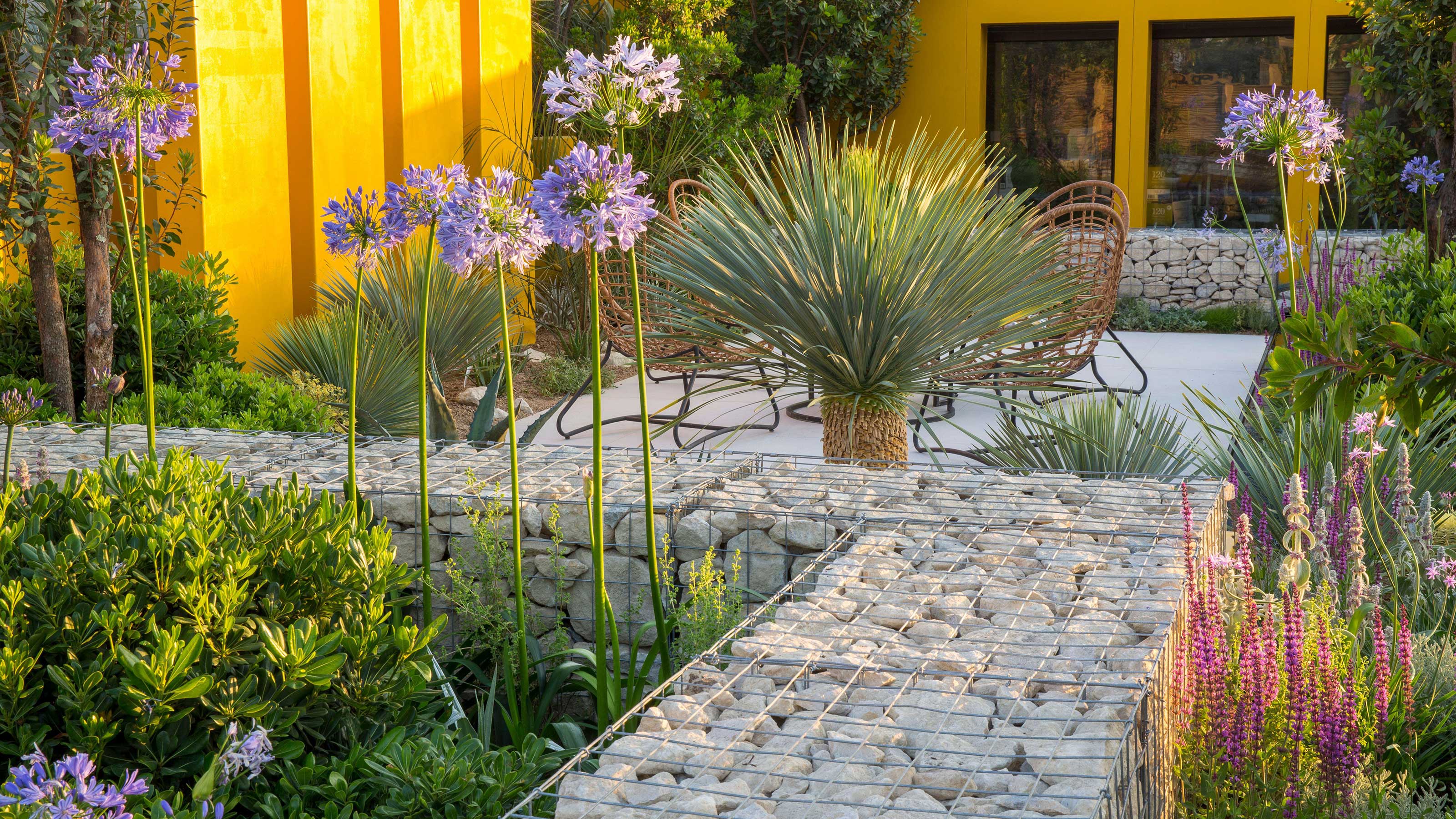

Have you considered landscaping ideas with rocks for your yard? Sleek surfaces and modern finishes are all good and well, but sometimes getting back to basics is just what a garden design needs. From dramatic and jagged structures to smooth pebbles, these natural materials can lead to spectacular results which fit all sorts of themes.
When it comes to your landscaping ideas, 'there are lots of ways you can add rocks and boulders to your garden, from creating a rockery to building a water feature,' as says Checkatrade. Rockeries are one of the most popular approaches, and they can instantly improve your outside aesthetic. 'Not only are rockeries visually stunning, but they are also a great way of showcasing new plants in your garden. Plus, rockeries look incredible year-round and are durable, surviving through terrible weather conditions,' adds the team.
But it's not just rockeries that can be created – from statement lawn edging to stone walls, there are all sorts of stunning looks to go for when it comes to bringing rocks into your garden. However they're used, they're a great way to recreate a sense of the natural landscape in your plot. But don't just take our word for it – we've rounded up lots of beautiful examples below.
11 gorgeous landscaping ideas with rocks for your garden
Whatever your garden's style, these beautiful designs are bound to get you inspired for an update.
1. Mix up the textures for added visual interest
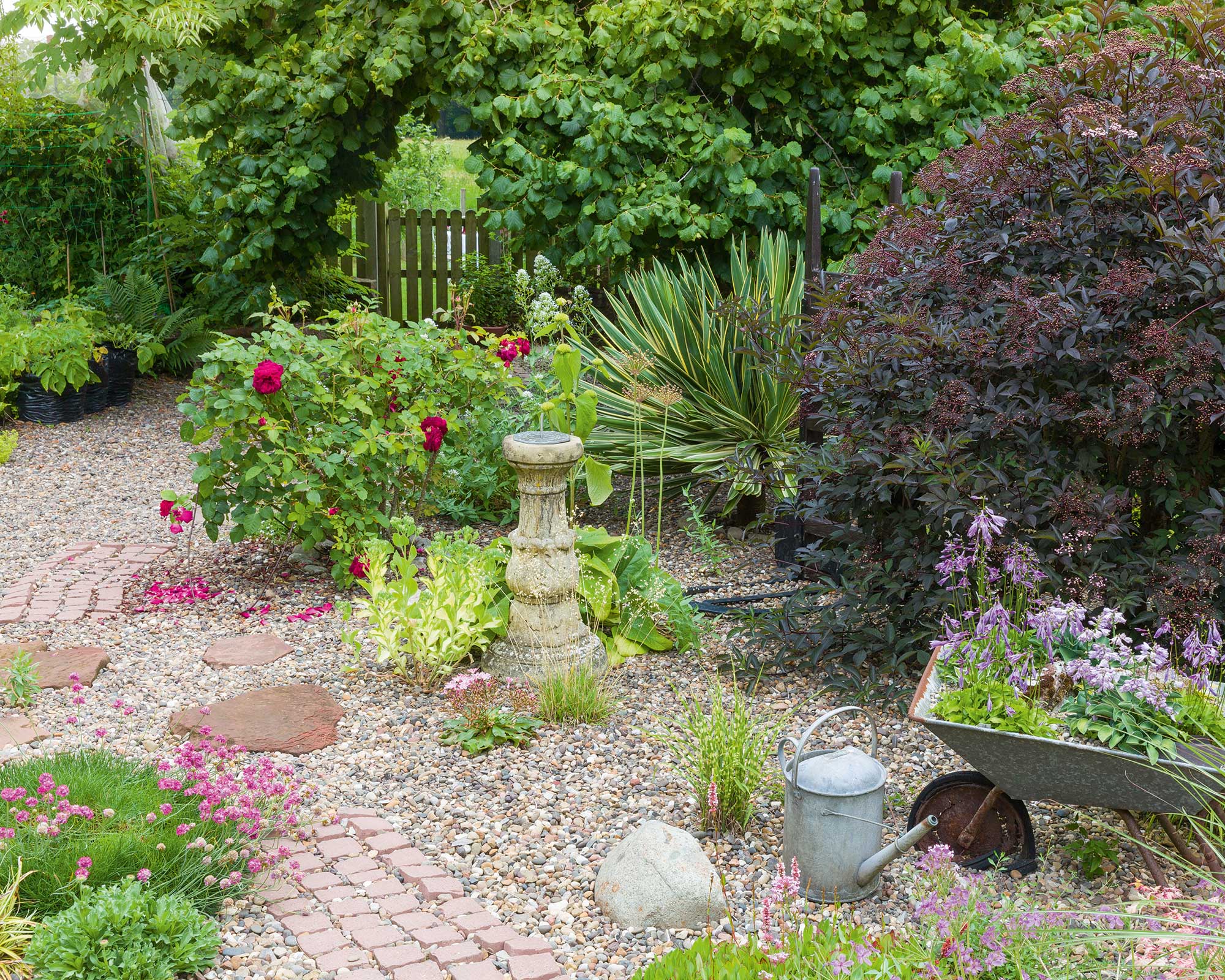
Gravel, bricks and landscaping stones look lovely set amongst planting in this set-up
Whether you're planning your back or front garden, this approach is a low-maintenance winner that's smart and stylish.
There are tons of benefits to garden gravel ideas: they're inexpensive, they're good at soaking up rainwater, and they're easy to install. They also work well in both modern and cottage-style plots. But, when you dot in some extra-large stones as focal points, the look can be given a whole new lease of life and becomes much more visually interesting. Pick complementary shades for a harmonious vibe.
You can also add plants amongst the scene for a burst of color – drought-tolerant picks work well such as pretty sea pinks, also known as thrifts. Euphorbias and ornamental grasses are also great options for their architectural foliage. You can find more of the best drought-tolerant plants in our guide.
2. Build a dry stone wall
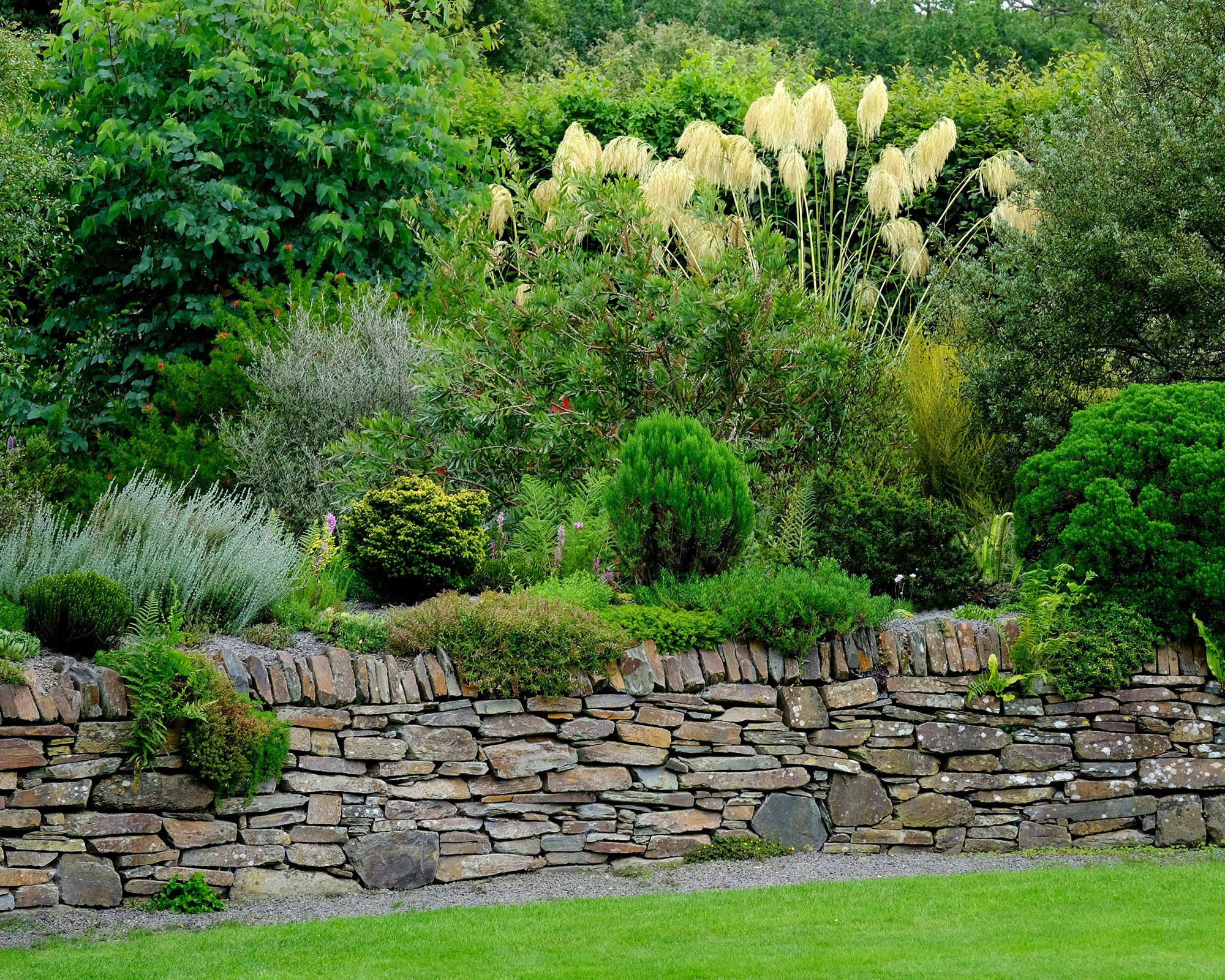
These traditional features offer tons of rustic charm
Rocks can be used to create striking garden walls, one of our favorites being the dry stone style. Dry stone walls are often spotted stretching across the British countryside, and the technique for creating them goes back thousands of years.
It's quite a work of art as there's no mortar involved. Instead, they're held together by the weight of the stones, which are cleverly stacked. You can build one yourself (the National Trust has a useful step-by-step guide), or hire someone to do it for you if you're not too fussed about sticking to a low budget. A well-made one will be built to last.
Soften the look with planting – the tumbling blooms of erigeron or one of the many varieties of sedum make lovely additions planted in nooks and crannies or along the top.
3. Surround a pond with pebbles for an organic feel
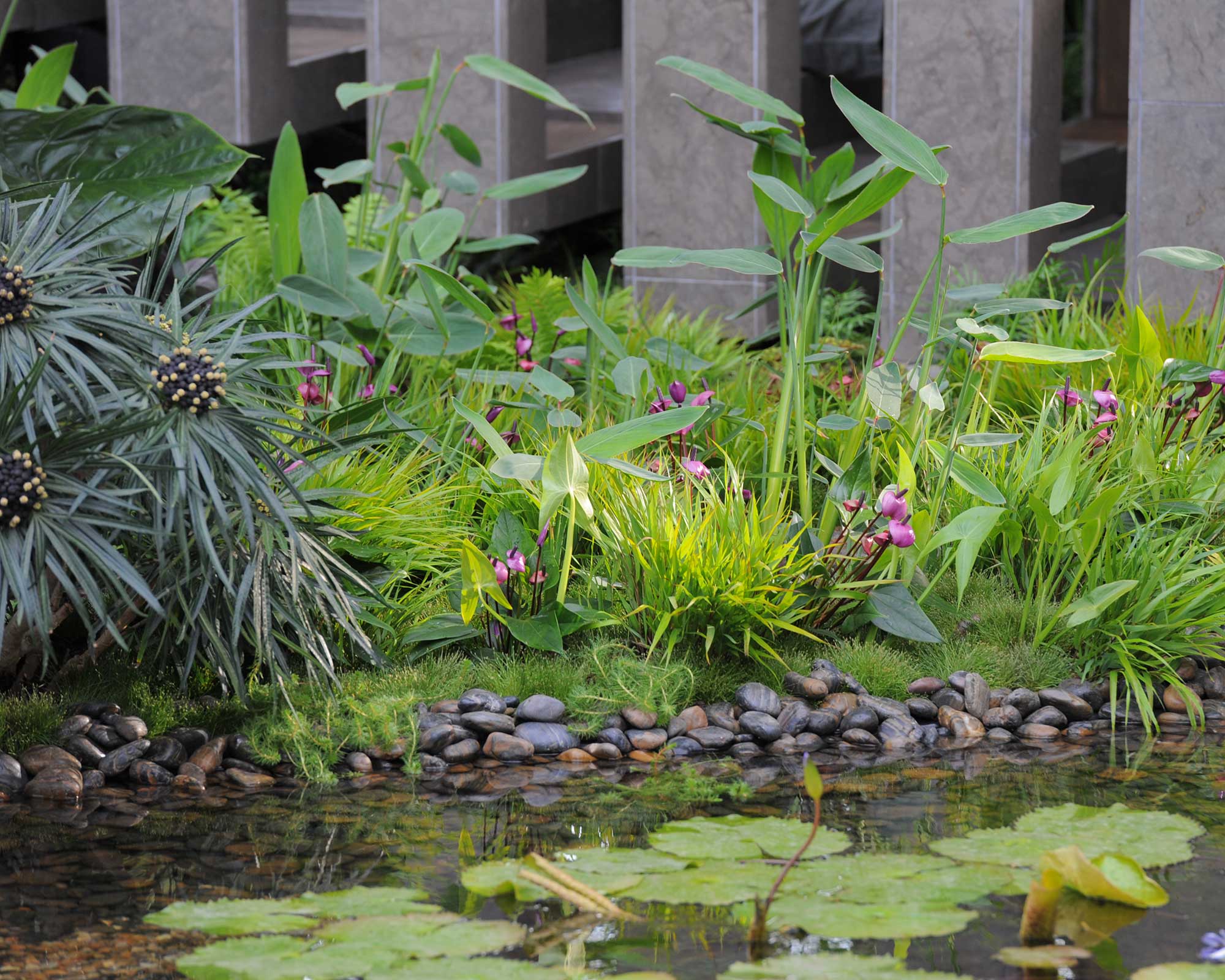
A pebble-lined pond at the 'Tourism Malaysia Garden' designed by David Cubero and James Wong at RHS Chelsea Flower Show
Garden pond ideas are always worth considering for a plot due to their beautiful appearance and all the benefits they offer to wildlife. However, an exposed pond liner can quickly ruin the aesthetic.
Covering the perimeter with pebbles will instantly make the feature feel at home in your backyard, giving it a much more natural vibe. Plus, the stones can serve as a useful way for smaller critters to get in and out of the pond easily. Choose smaller stones for an elegant style, whilst larger rocks will add a more rustic edge.
Don't forget to add plenty of pond plants too for extra color and interest – our guide to the best pond plants has lots to pick from.
4. Or, go a step further and make a beautiful waterfall
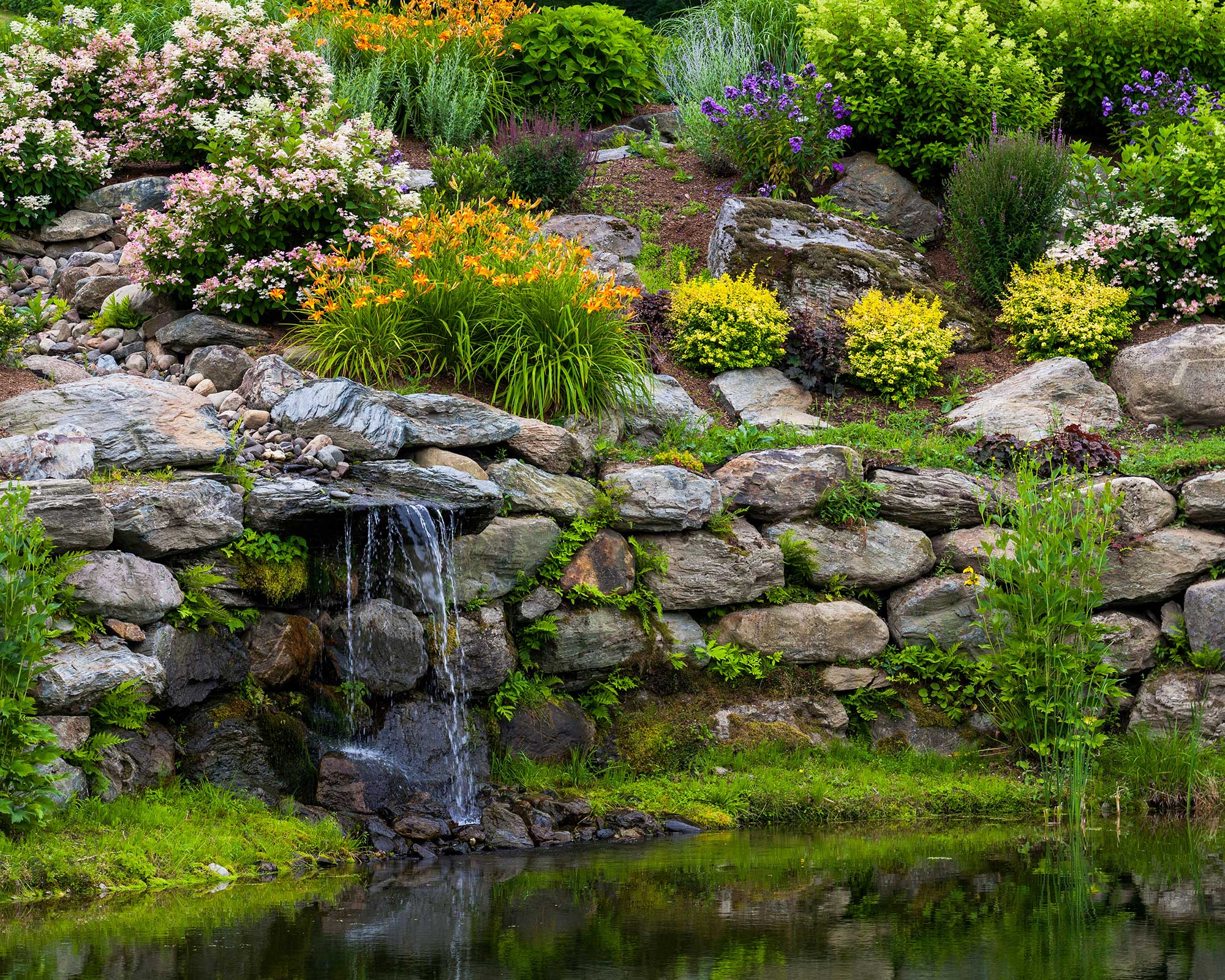
This waterfall provides an eye-catching focal point
If a simple garden pond feels a bit tame for your plans, then a waterfall made from rocks is bound to take things up a notch.
The cascade of water makes a breathtaking feature for any backyard and will provide a soothing sound, too. You could go for a larger structure like this one, which is built into a retaining wall, or a small and shallow meandering stream. Whichever style you choose, pick rocks and stones in a range of shapes and sizes and position them in an organic form for the best effect.
Line the scene with lush planting and your backyard will be transformed into a relaxing, nature-inspired oasis in no time. Our pond ideas with waterfalls feature has lots more lovely looks.
5. Try gabion walls for a rustic look
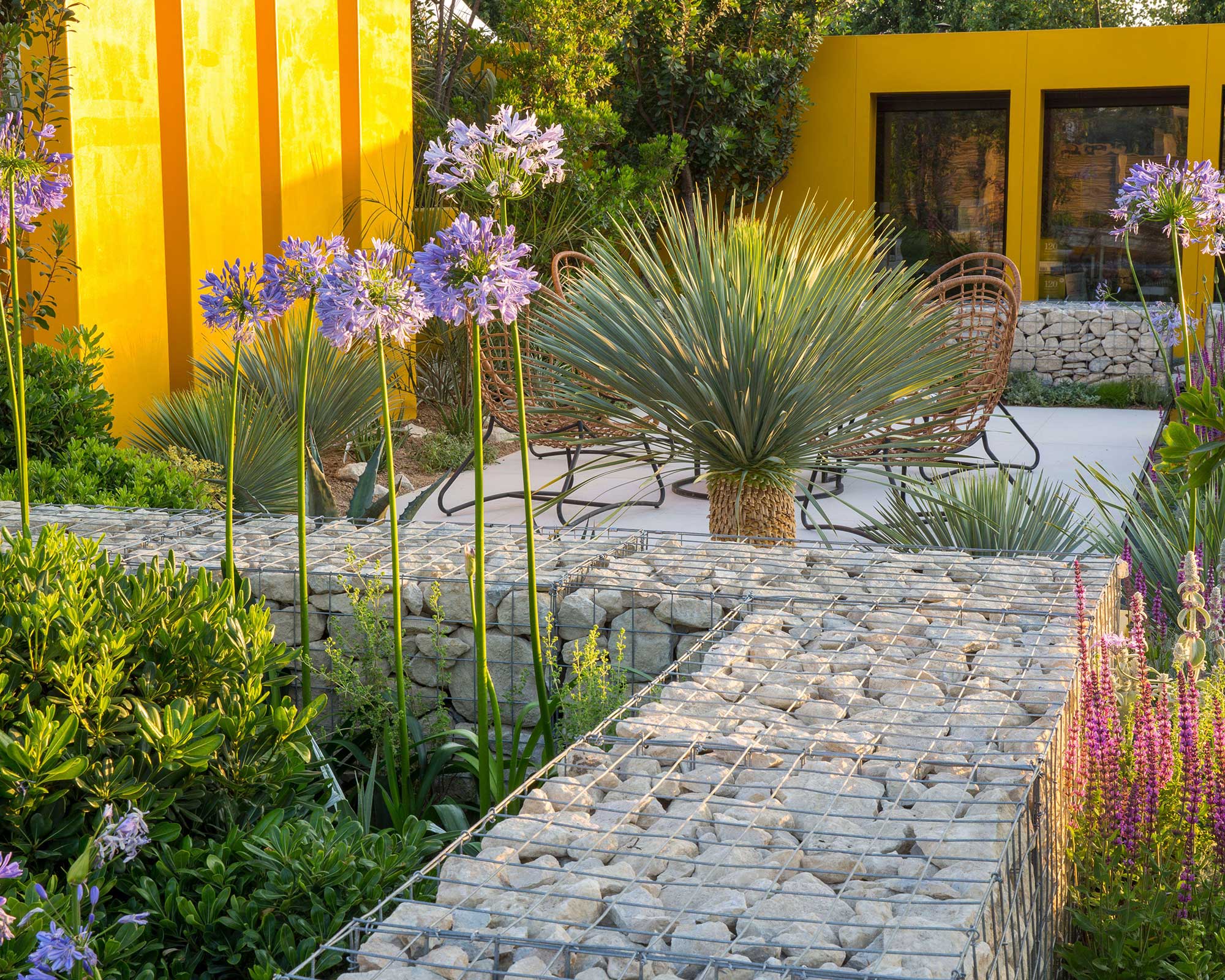
The 'Santa Rita "Living La Vida 120" Garden', designed by Alan Rudden for RHS Hampton Court Palace Garden Show 2018, mixes gabion walls made from pale stones with colorful, drought-tolerant plants
Another eye-catching option when it comes to landscaping ideas with rocks is a gabion wall. These structures are created by filling a wire basket with as many stones as possible. Providing the wire is made from a metal that isn't prone to rust, they're incredibly durable and they're great for drainage too.
Gabion walls offer all the organic appeal of rocks but in a neat, linear, and slightly industrial way. They can be used as boundary lines, garden divider ideas, or even as seating. They're also pretty simple to build yourself. If you're trying to save on costs, a good tip is to use a cheaper, less attractive stone hidden away in the center, then line the edges with the more expensive rocks – that way you won't lose any of the visual appeal.
We love the pale stones used in this design – they make a lovely contrast against the surrounding drought-tolerant planting and deep-yellow structures.
6. Edge a lawn with large rocks for a tropical vibe
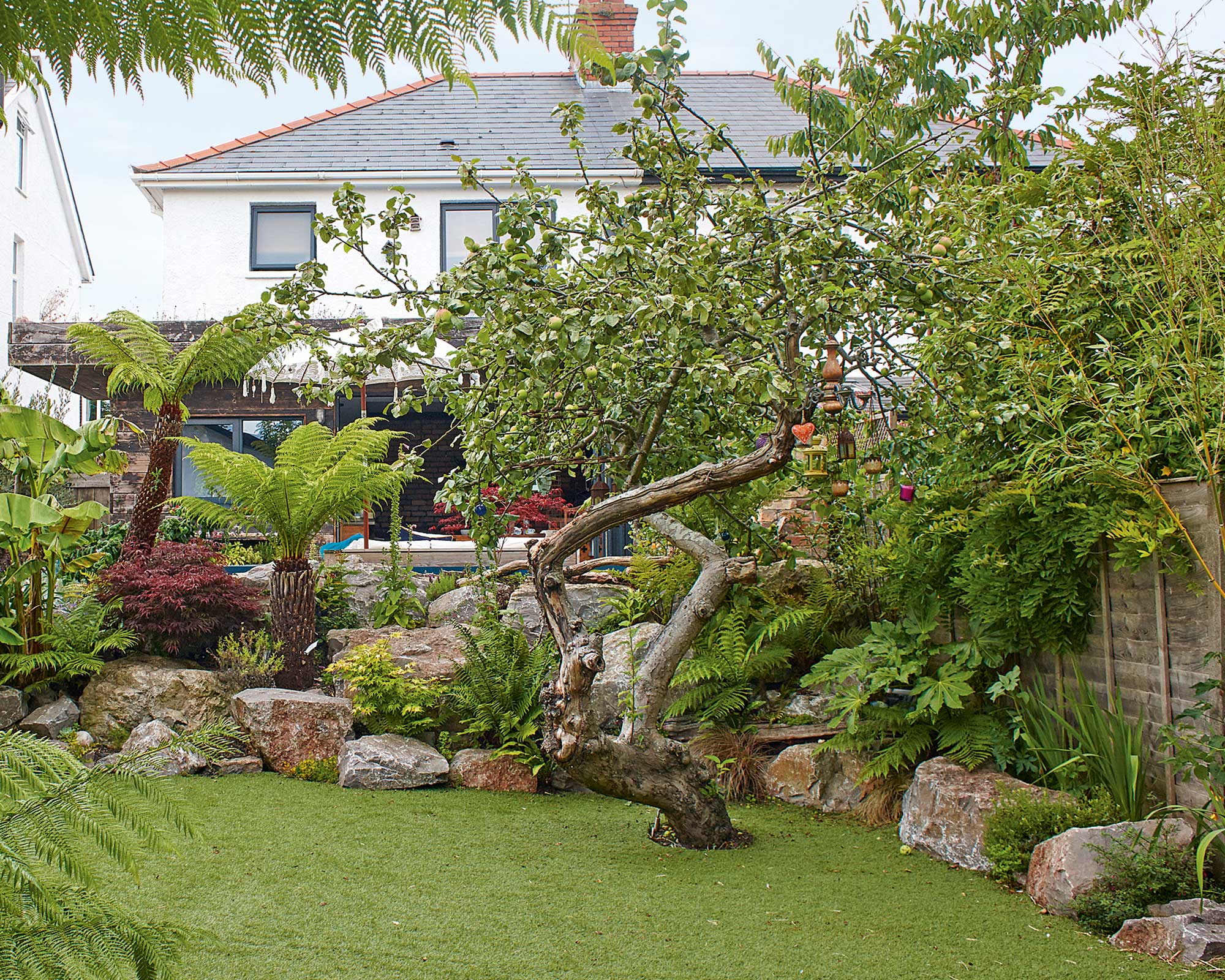
Large boulders add definition to this space
A line of rocks makes a brilliant solution if you're on the lookout for garden edging ideas. Whether you choose smaller ones or larger boulders like the ones in this scene, they'll do wonders at keeping mulch, gravel, and planting in their proper places.
Here, the rocks have been built up on one side to create a show-stopping divider between a lawn and patio. A selection of foliage, including ferns, tree ferns, Fatsia japonica and acers intersperse the stones to create a jungle-like backdrop. It's the perfect look for a subtly tropical theme.
- Looking for more ways to bring extra foliage into your garden? Our guide to landscaping around trees has plenty of suggestions.
7. Create a beach-themed backyard
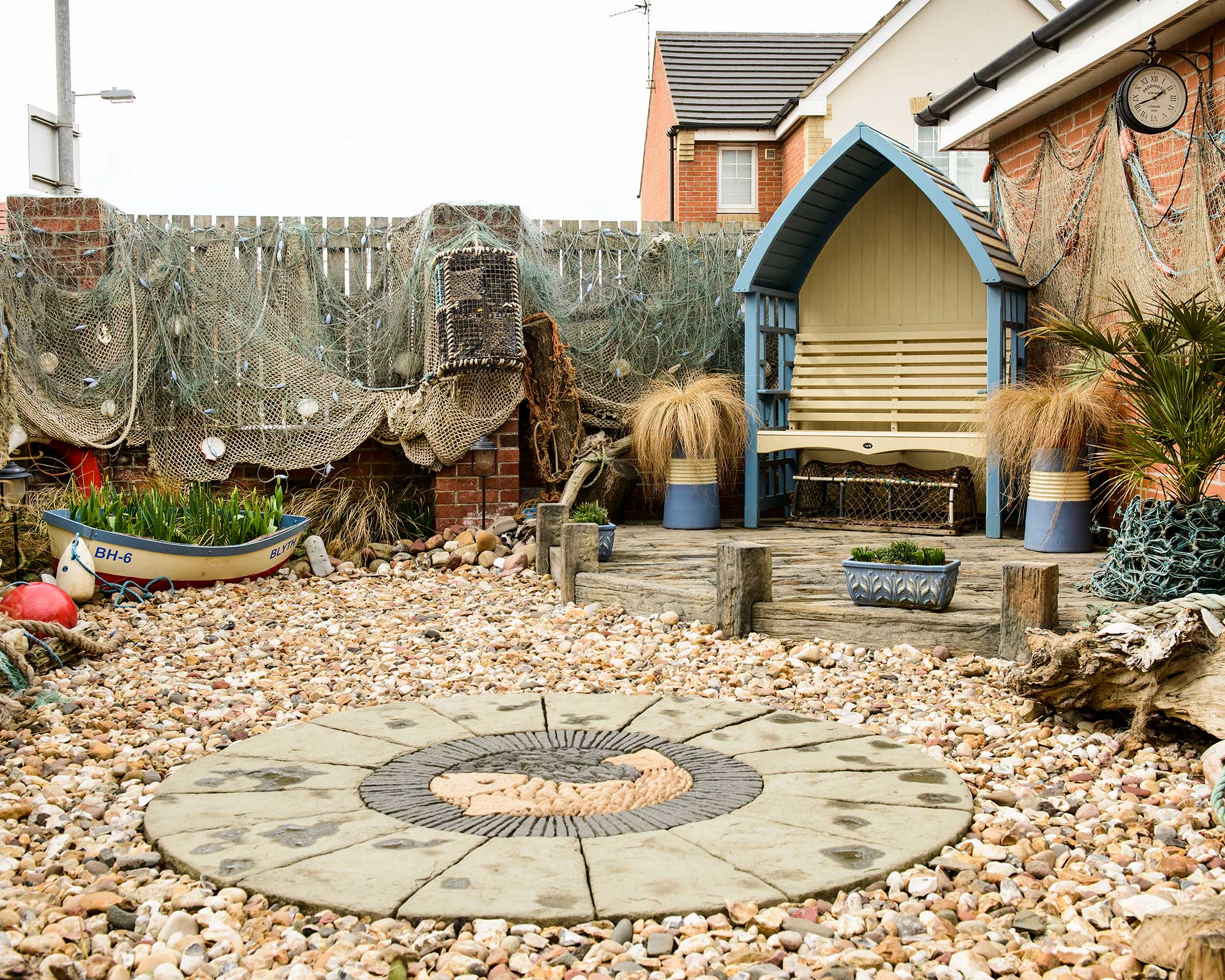
This backyard is filled with beach-inspired features
If you love a coastal theme, landscaping ideas with rocks are well worth adding to your design.
Cover the ground in decorative pebbles – just like the ones you'd find on the beach – in a palette of soft grays, sands, and blush. Then, weave in some of the best coastal plants for extra color. To go a step further, think about dotting shells, driftwood and smooth pieces of sea glass around seating areas or in amongst container displays.
A nautical color scheme of blues and whites will also work for this look, too – try painting a bench or an arbor in jolly stripes for a vintage seaside feel.
8. Use rocks in a Zen-inspired scheme
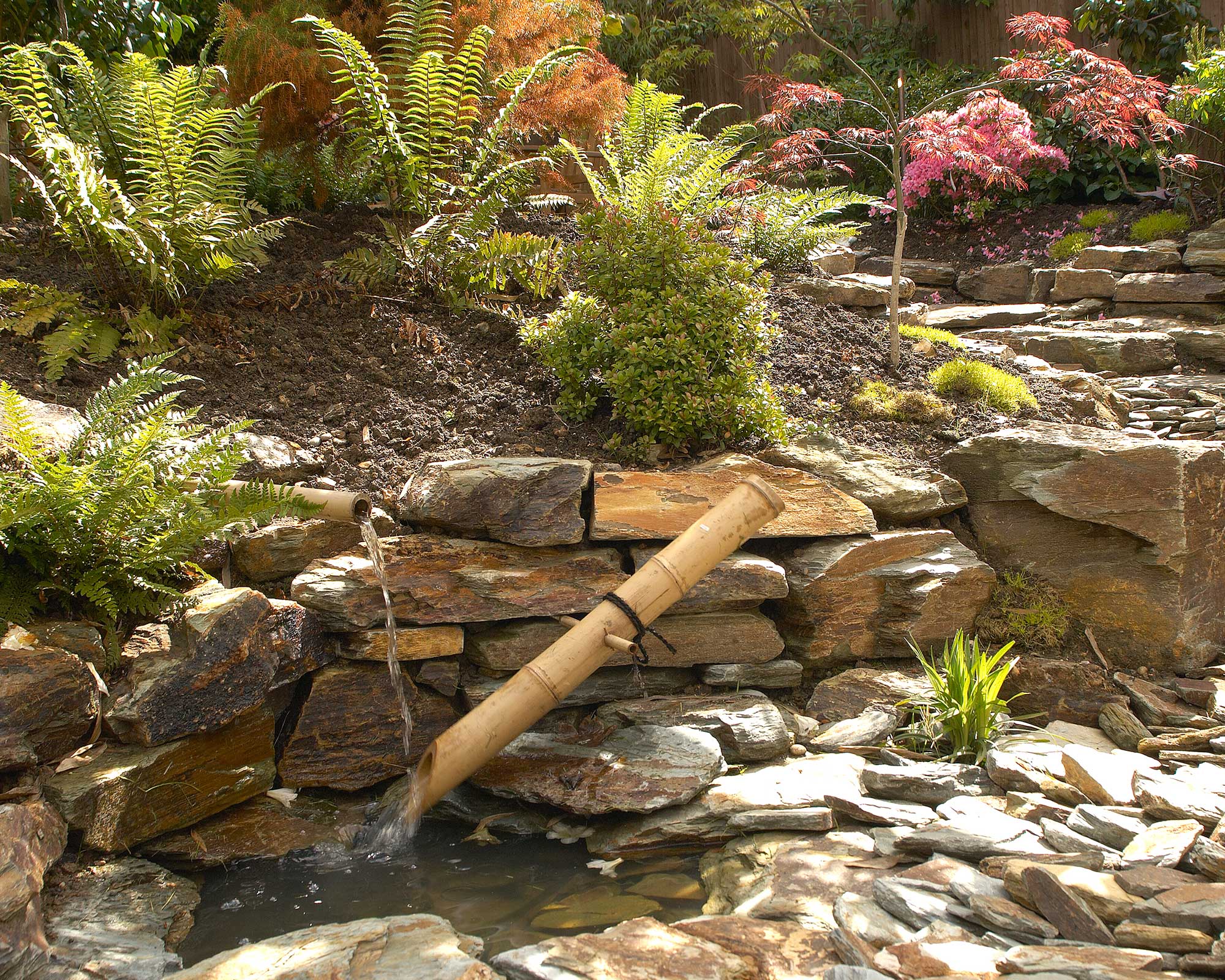
This traditional water feature works well for this style of plot
Rocks are a traditional addition to Zen gardens, often carefully positioned amongst minimal planting to symbolize mountains or islands. Beds of fine gravel, raked into patterns, are another popular feature that can be used to represent rivers or waves.
In these Japanese-inspired plots, rocks can also be used to create what's known as 'dry rivers' – without water – which wind through the space perhaps accompanied by an overarching bridge. Of course, you can use water if you prefer – the trickling sound and sight will only add to the serene vibe.
This water feature, made from bamboo, is called a shishi-odoshi. They're traditionally used to scare away intruding animals, however, the sound it creates can be rather relaxing. For an authentic vibe, bring one into your rocky landscape plan, then surround with lush ferns and colorful acers to complete the scene.
9. Surround planters with pebbles
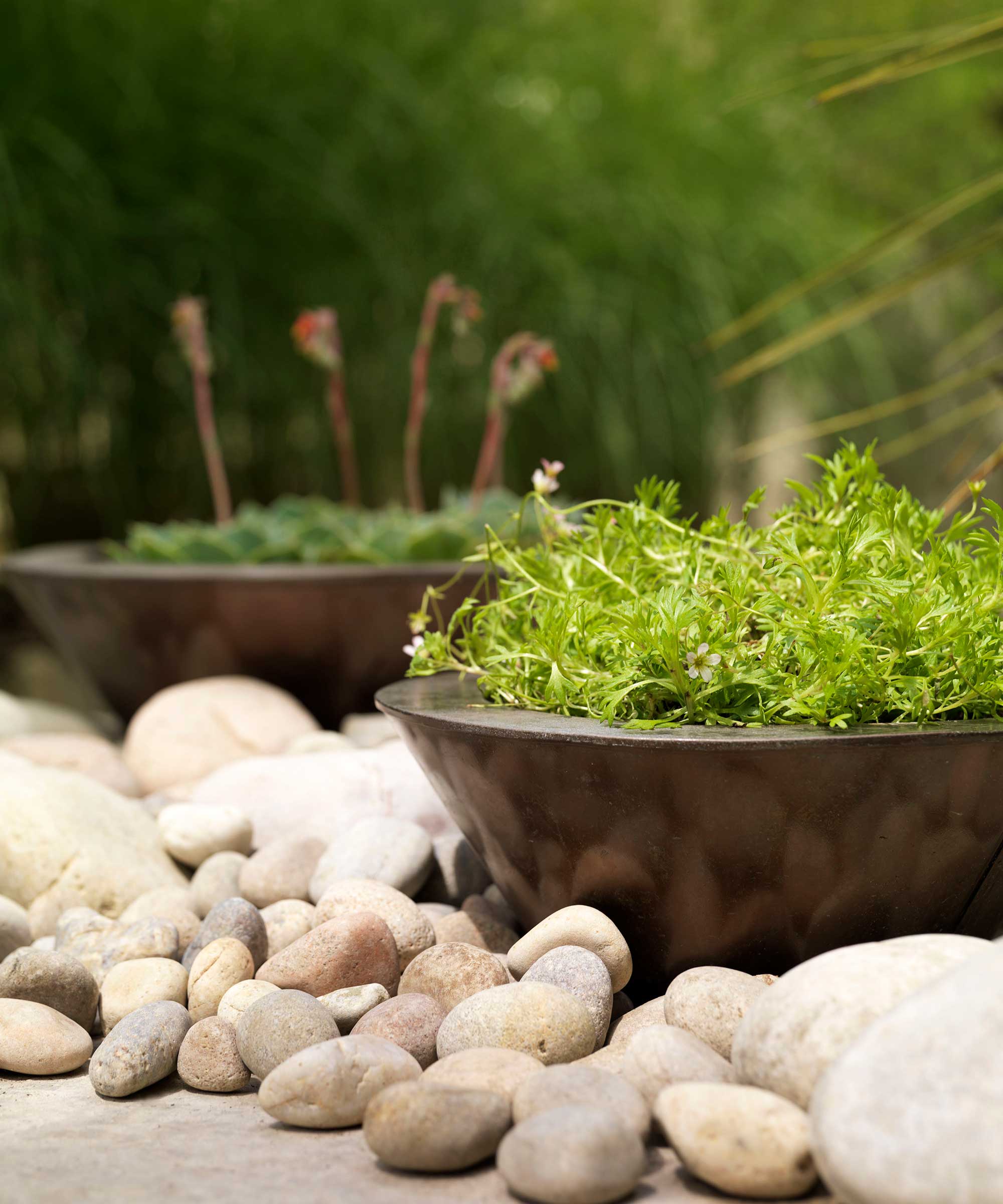
We like the stylish color palette of this set-up
Container gardening ideas are a brilliant way to brighten up a patio or deck and are particularly useful in small plots. However, if your planter display feels a little out of place, then a handful of rocks around the base can really help it to blend into the surroundings.
Pick a color and style of rock that will complement your planting design (and the container itself) for a balanced and pulled-together look. These pale stones, for instance, pleasingly contrast against the dark-hued pots and bright green foliage for a minimal yet contemporary scene.
10. Build stone steps for a sense of adventure
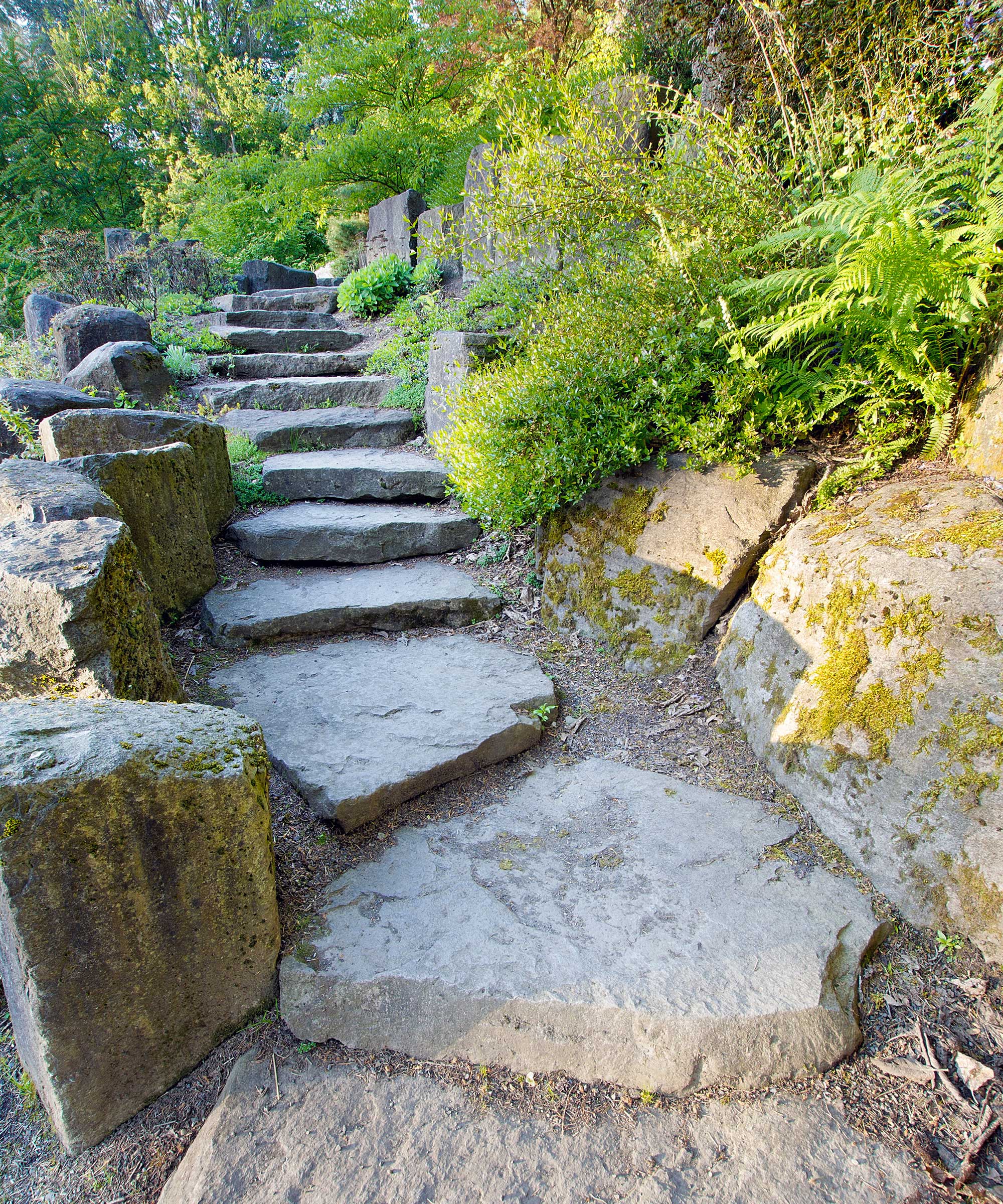
A curved set of stone steps adds a natural vibe
If you have a multi-tiered or sloping plot then you'll probably need to factor steps into your landscaping plans. And using a series of large, flat-topped rocks, as seen here, is a stunning way to go about it.
They add a real sense of adventure to this larger plot, and we love how they've been lined with large, moss-covered boulders too, to extend the theme.
Rocks are also great for garden path ideas – try using them as stepping stones for a playful way of getting from A to B. Just avoid placing them right down the center of your yard – a common landscaping mistake that is often impractical and seldom looks good.
11. Plant up a pretty alpine scene
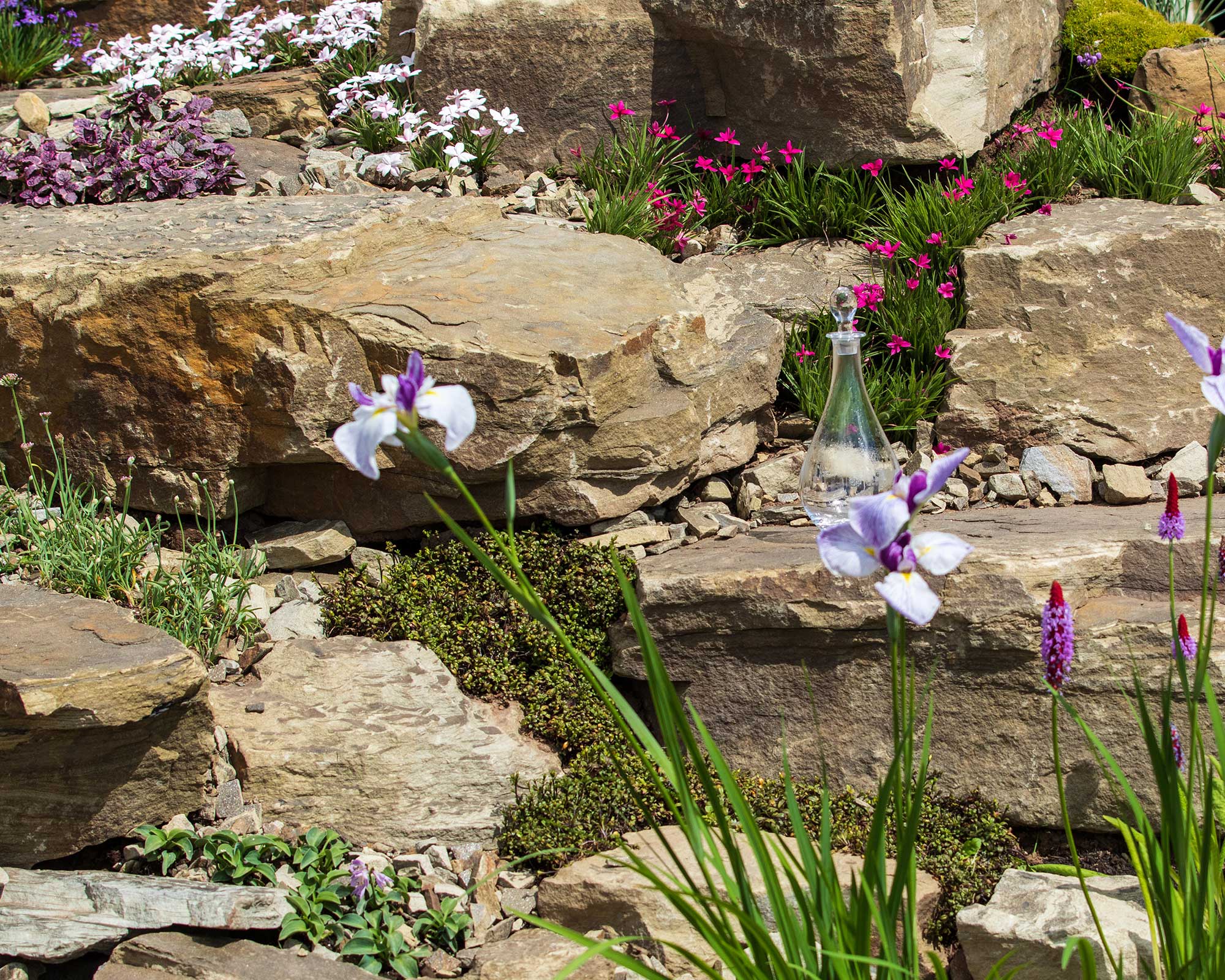
There are lots of vibrant rockery plants to choose from
A rockery is a classic way to use this material in your yard, but although traditional, they're certainly not an idea to overlook. Small rock gardens can be built in a container, whilst larger set-ups in raised beds can make a gorgeous yet low-maintenance focal point.
Whatever the size, there are tons of planting picks to choose from, including all the delights of alpines. Think saxifrages, creeping thyme, campanula and dianthus for vibrant color and interesting texture. Orchid primroses, which look like miniature red hot pokers but in tones of purple and crimson, are another statement choice.
How much does it cost to create a rockery?
When planning a new look for your garden, it's always worth having an idea of how much landscaping costs. And if you love the idea of a rockery, Checkatrade explains how the cost 'varies, depending on how large it is and the kinds of rocks you'd like to use.' But, on average, the cost to install one is between £300 and £500 (around $415–$690). Using local stone can help cut down costs, and it's also worth checking with your neighbors or nearby building developments who may be happy to give away excess rocks for free.
What about the cost of installing those dramatic feature boulders? 'First, you need to choose and buy your perfect boulders – these can cost between £250 and £556 per tonne [$345–$765], plus the cost of delivery,' the team explain.
'As for where best to place your boulders and the actual positioning of them, you may need to bring in a professional landscape gardener. This can cost around £22 [the equivalent of $55] an hour.'
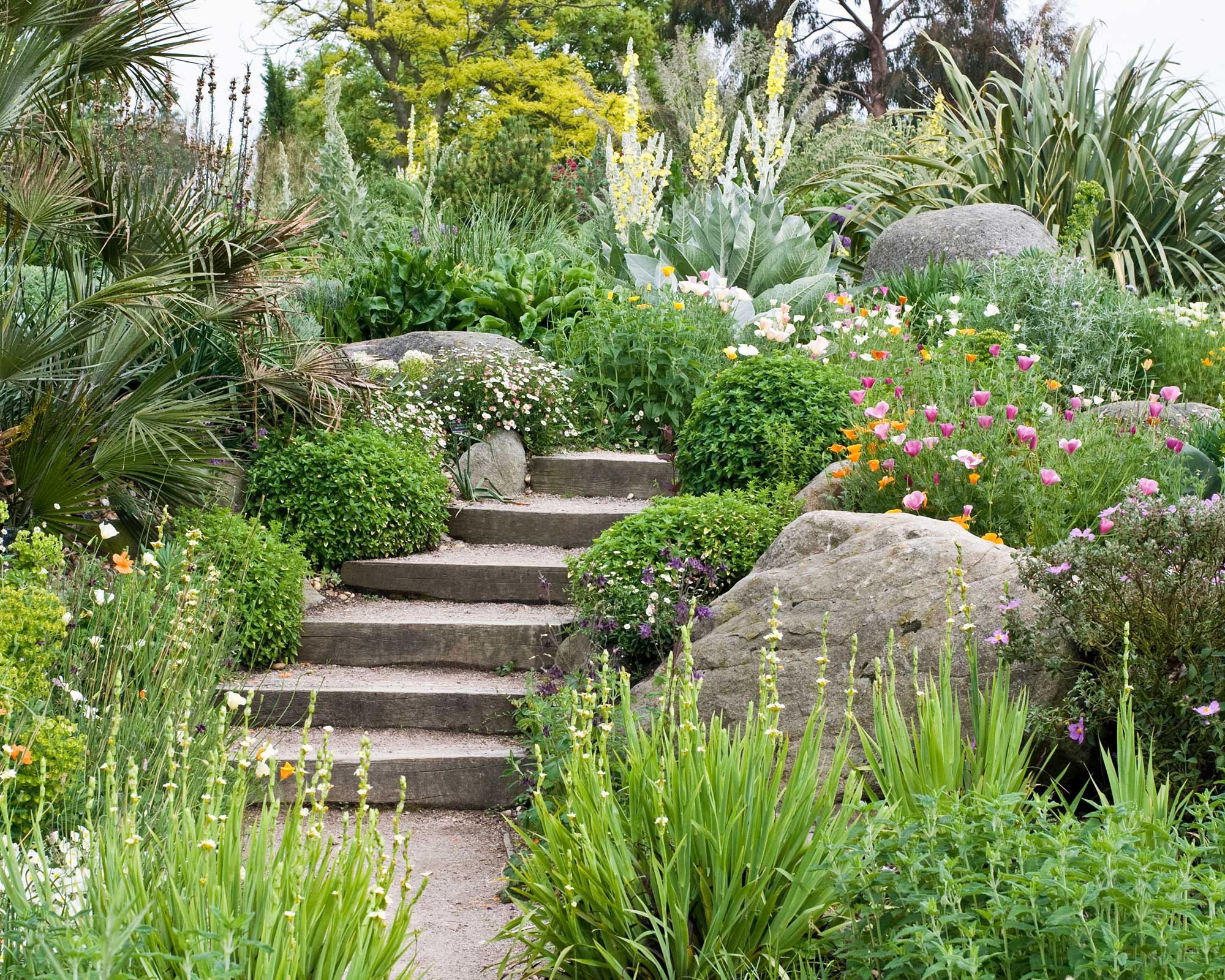
Larger boulders can be expensive to install, especially once you factor in the delivery
How do you build a rockery?
Want to know how to build a rockery? It's quite easy to do yourself, as Checkatrade explains:
- Dig up any weeds and grass in your rockery area.
- Pour on a layer of stones and rubble to create a base for your rockery.
- Next, choose a range of large rocks to form the structure of the rockery and place them around the edges.
- You can then use smaller stones to fill your rockery space and stabilize the large rocks. It is worth bedding these in using topsoil.
- Carefully add your alpine plants in positions according to your plan.
Looking for more DIY projects for a sunny weekend? Our guides on how to lay a patio and how to build a garden pond are worth a look.
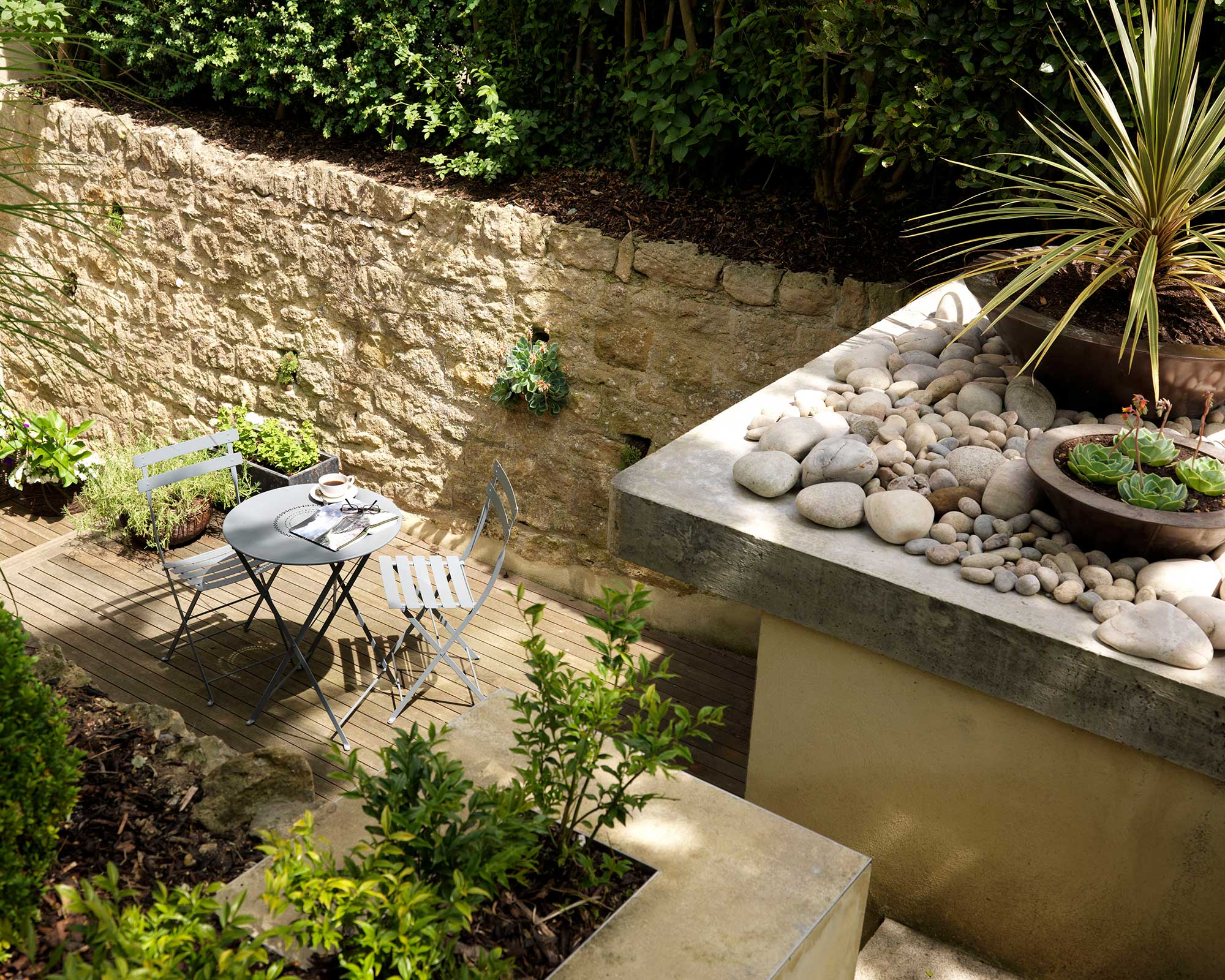
These pale stones add interest to a raised garden level
How do you lay landscaping rocks as a ground cover?
Laying gravel or larger pebbles as a ground cover is a super easy solution for pathways, or as an alternative to your paving ideas. There are just a few steps to follow to achieve the look:
- Prepare the ground by removing all plants, including weeds, as well as any large rocks.
- Level the soil to create a flat surface.
- If you're looking to plant into the soil through your stones, it's a good idea to add a layer of compost to boost its nutrients.
- Although it's not strictly necessary, you can put down a weed membrane to make maintenance even easier in the long run. Simply make holes through it when planting.
- Don't forget to install your edging, if using. This will give the design a neater appearance.
- Then, pour over your stones and level them out evenly.
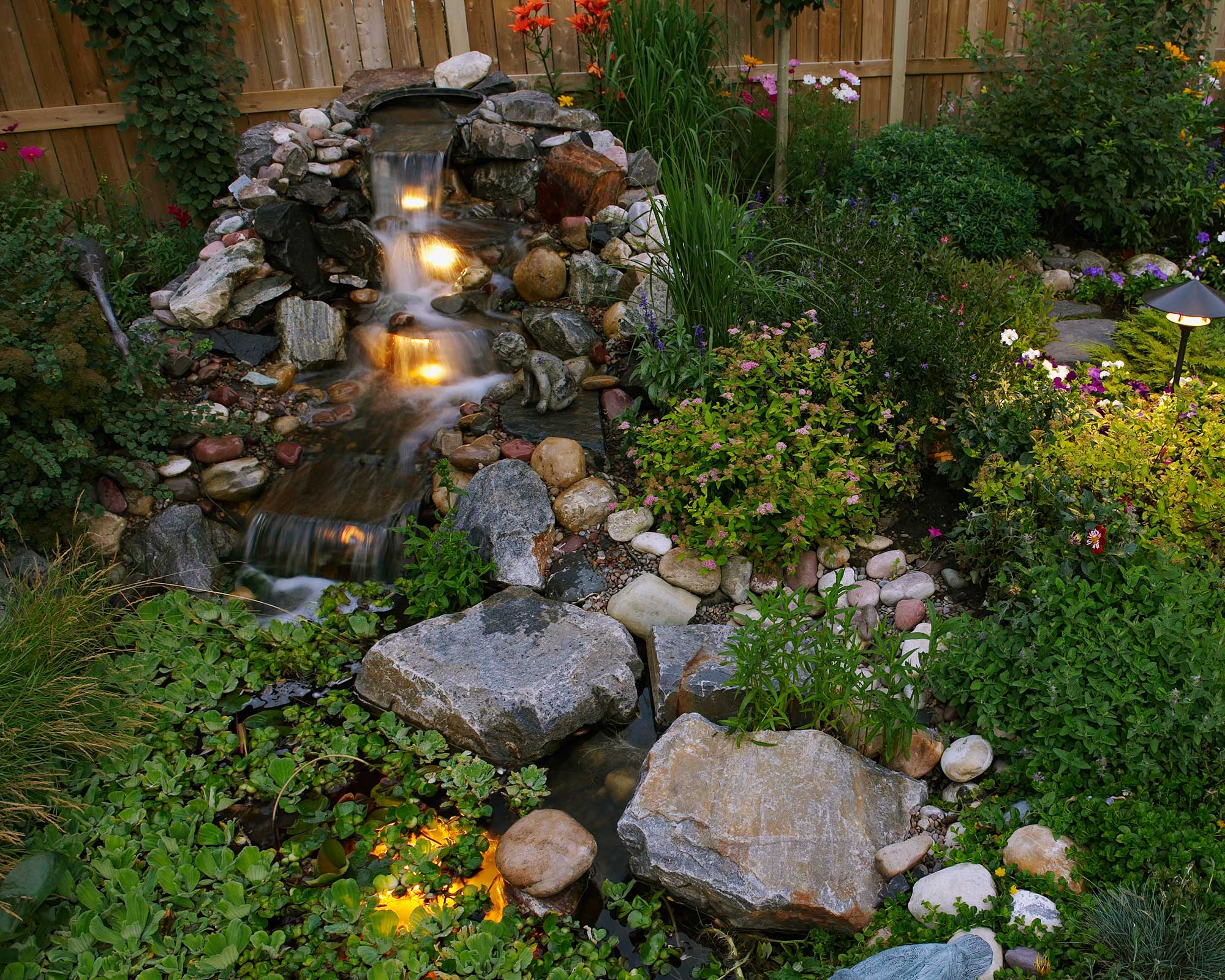
The addition of lights in this rocky waterfall means the display can be enjoyed when night falls

The garden was always a big part of Holly's life growing up, as was the surrounding New Forest where she lived. Her appreciation for the great outdoors has only grown since then. She's been an allotment keeper, a professional gardener, and a botanical illustrator – plants are her passion.
